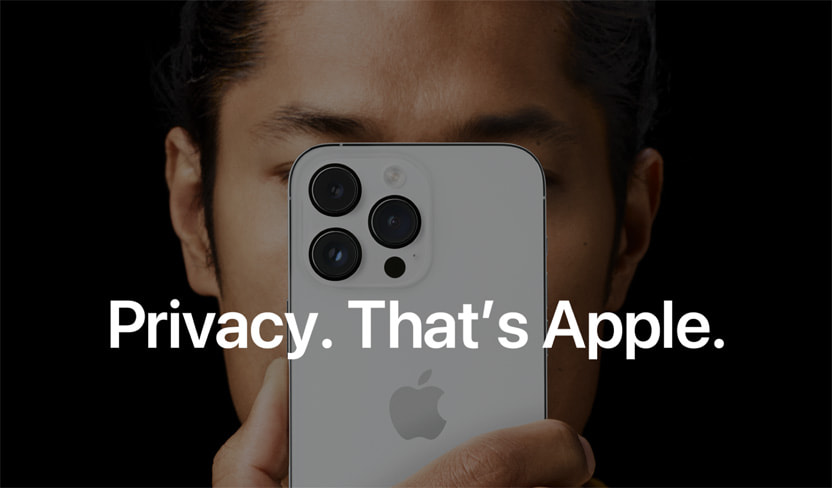In the ever-evolving landscape of digital technology, few topics ignite as much debate as the intersection of user privacy, market competition, and corporate responsibility. At the heart of this global conversation is Apple Inc., a company that has built its brand and a significant portion of its market value on a steadfast commitment to user privacy. However, this very commitment is now at odds with a growing wave of international regulations aimed at dismantling the “walled gardens” of Big Tech. As regulators push for more open digital markets, Apple argues that these mandates, designed to foster competition, could inadvertently dismantle the very security architecture that protects millions of users. This article delves into the complex technical and philosophical battleground where Apple’s privacy-first ecosystem meets the regulatory demand for interoperability and choice, exploring the profound implications for everything from iPhone news to the future of augmented reality.
The Core of the Conflict: Apple’s Privacy Stance vs. Digital Market Regulation
For years, a central theme in Apple ecosystem news has been the company’s vocal and strategic positioning as a champion of user privacy. This isn’t just a marketing slogan; it’s a core engineering principle embedded deep within its products. From the iPhone to the Apple Watch, the company’s philosophy revolves around minimizing data collection, processing data on-device whenever possible, and providing users with transparent controls. This approach has culminated in a tightly integrated, closed ecosystem—often called a “walled garden”—where Apple controls the hardware, the operating system, and the primary gateway for software distribution, the App Store.
Apple’s Foundational Privacy Principles
Apple’s privacy framework rests on several key pillars that are now being challenged by new regulations:
- Data Minimization: The principle of collecting only the data absolutely necessary to provide a service. This is evident in features like on-device processing for Siri queries, which keeps sensitive audio data off cloud servers, a recurring topic in Siri news.
- On-Device Processing: By leveraging the powerful chips in devices like the iPhone and iPad, Apple performs sensitive tasks like facial recognition for photos and health data analysis directly on the user’s device. This ensures that personal information, a cornerstone of Apple health news, never leaves the user’s control.
- User Transparency and Control: Features like App Tracking Transparency (ATT) and Privacy Nutrition Labels, often highlighted in iOS updates news, force developers to be upfront about their data collection practices and require explicit user consent for tracking across apps and websites.
- Security through Integration: The seamless integration of hardware and software, from the Secure Enclave in an iPhone to the encryption protocols in iMessage, creates a robust security chain that is difficult for malicious actors to penetrate.
The Regulatory Push for Open Markets
Conversely, regulators, particularly in the European Union with its Digital Markets Act (DMA), view this closed ecosystem as a barrier to fair competition. Their goal is to prevent “gatekeepers” like Apple from leveraging their dominant position to stifle innovation and limit consumer choice. The regulations propose several sweeping changes:
- Sideloading: Allowing users to install applications from outside the official App Store, directly from the web or third-party marketplaces.
- Interoperability: Mandating that messaging services (like iMessage) work with competing platforms.
- Alternative Payment Systems: Forcing Apple to allow developers to use third-party payment processors within their apps, bypassing Apple’s commission.
Apple contends that each of these mandates, while well-intentioned from a competition standpoint, directly threatens the security and privacy promises it makes to its users, creating a fundamental clash of ideologies.
Deconstructing the “Walled Garden”: How Apple’s Ecosystem Protects User Data
To understand Apple’s resistance, it’s crucial to analyze the technical mechanisms that form its defensive walls. This integrated approach has been part of Apple’s DNA since the days of the first iPod, a philosophy that has evolved significantly over generations of products, from the iPod Touch news of the past to the latest Apple Vision Pro news.

The App Store: A Curated and Sandboxed Environment
The App Store is more than just a digital storefront; it’s the first line of defense in the iOS security news narrative. Every app submitted undergoes a rigorous App Review process where Apple checks for malware, security vulnerabilities, privacy policy violations, and fraudulent behavior. While not infallible, this process filters out a vast number of malicious applications that plague more open platforms.
Furthermore, every app on iOS operates within a “sandbox.” This is a security mechanism that restricts an app’s access to the device’s file system and other apps’ data. An app can only access data that the user explicitly grants permission for (e.g., contacts, photos, location). Mandating sideloading would bypass this entire curation and sandboxing model, potentially allowing unvetted apps to run with fewer restrictions, exposing users to risks.
Hardware-Software Integration: The Secure Enclave and Beyond
Apple’s control over both hardware and software allows for security features that are difficult to replicate in a fragmented ecosystem. The Secure Enclave, a dedicated coprocessor built into Apple’s A-series and M-series chips, is a prime example. It handles sensitive data like Face ID/Touch ID biometrics and Apple Pay encryption keys in a completely isolated environment, inaccessible even to the main operating system. This is why data from your Apple Watch or the location of your AirTag is so securely managed. This deep integration is a recurring theme in all major product news, from Apple Watch news to AirTag news.
This philosophy extends to accessories. The seamless and secure pairing of AirPods, for instance, relies on the W1 and H1 chips, which communicate directly with the iOS device. Any discussion about AirPods news, whether it’s for the Pro or Max models, inevitably touches on this effortless and secure connectivity, which could be compromised in a more fragmented system. The same principle will be critical for emerging product categories, including Vision Pro accessories news, where security and data privacy are paramount.
The Regulatory Counter-Argument: Unpacking the Risks and Rewards of an Open Ecosystem
While Apple’s security arguments are technically sound, regulators and critics argue they can also serve as a convenient justification for maintaining a profitable monopoly. They believe the benefits of a more open market—increased competition, lower prices, and greater innovation—outweigh the potential risks, which they argue can be mitigated.
The Sideloading Debate: Choice vs. Chaos
Proponents of sideloading argue that users should have the freedom to install any software they want on the devices they own. They point to macOS, where users have been able to install software from outside the Mac App Store for years. For developers, it offers a way to avoid the App Store’s 15-30% commission and its sometimes-opaque review policies. This is a major point of contention in ongoing iPhone news and iPad news cycles.
Real-World Scenario: Imagine a small software company develops a niche creative tool, perhaps a new kind of iPad vision board news app. Under the current model, they must adhere to all of Apple’s guidelines and pay a commission. In a world with sideloading, they could distribute it directly, potentially offering it at a lower price. However, Apple counters with another scenario: a less tech-savvy user is tricked by a phishing email into downloading a fake banking app from a third-party website. This app could then record their keystrokes and steal their credentials, a risk that the App Store’s vetting process is designed to prevent.

Interoperability and the Encryption Dilemma
The push for messaging interoperability is driven by the desire to break down communication silos. Regulators argue that the dominance of services like iMessage creates a “network effect” that locks users into the Apple ecosystem. However, forcing iMessage to be compatible with SMS/MMS or other services raises significant technical challenges for its signature feature: end-to-end encryption. Maintaining a secure, encrypted connection between an iMessage user and a user on a different, potentially less secure platform is a complex problem. Apple argues that any such mandate would inevitably weaken the security for everyone, effectively creating a backdoor that undermines the core promise of private communication.
The Broader Impact: From AirPods to the Future of AR
The implications of this regulatory battle extend far beyond the iPhone’s home screen. The very fabric of the seamless, integrated Apple ecosystem news is at stake, potentially affecting user experience and the trajectory of future innovation.
User Experience and the Innovation Pipeline
Apple’s long-term vision, especially in areas like augmented reality (Apple AR news), relies heavily on its integrated model. The Apple Vision Pro, for example, is a device that will handle an unprecedented amount of personal and environmental data. Its security model must be airtight to gain user trust. The development of its unique input methods, perhaps even a future Vision Pro wand news-worthy controller or advanced Apple Pencil Vision Pro news, depends on a stable and secure OS. Apple argues that introducing third-party app stores and unvetted software could create a chaotic environment that would not only compromise privacy but also degrade the user experience and stifle the kind of ambitious innovation the Vision Pro represents.

Even existing accessories could be affected. The reliable performance of a HomePod or HomePod mini, the instant pairing of AirPods Max, and the data synchronization for Apple TV all depend on the current, controlled ecosystem. Any Apple TV marketing news often highlights this “it just works” factor, a key differentiator that could be lost.
Tips and Considerations for Users
- Stay Informed: Keep up with iOS updates news, as Apple frequently introduces new privacy and security features. Understand what permissions you grant to apps.
- Be Skeptical: Regardless of the regulatory outcome, always be wary of unsolicited links or requests to install software, especially if sideloading becomes a reality.
- Use Security Features: Take full advantage of features like Face ID/Touch ID, two-factor authentication, and the “Find My” network for all your devices, from your iPhone to your AirTags.
The debate even touches on nostalgia and future product speculation. While seemingly distant, discussions around a potential iPod revival news often center on creating a simple, secure device for a specific purpose, like music or audiobooks—a concept rooted in the closed-ecosystem philosophy that began with the original iPod Classic and continued through the iPod Nano, Shuffle, and Mini.
Conclusion: A Defining Moment for Digital Privacy
The clash between Apple and global regulators represents a pivotal moment in the history of consumer technology. It forces us to confront a difficult question: What is the right balance between fostering a competitive, open market and ensuring robust, user-friendly privacy and security? Apple’s position is clear: its integrated, “walled garden” approach is not an anti-competitive tactic but a necessary framework for protecting user data in an increasingly hostile digital world. Regulators, however, see a gatekeeper using privacy as a shield to protect its market dominance.
As this battle unfolds, the outcome will have lasting consequences for the entire tech industry. It will shape the future of software distribution, define the boundaries of corporate responsibility, and ultimately determine the level of control users have over their own digital lives. For consumers, the key takeaway is the growing importance of digital literacy. Regardless of how the regulations evolve, the ultimate power will lie with informed users who understand the trade-offs and actively manage their own privacy and security in an ever-more-complex digital landscape.











